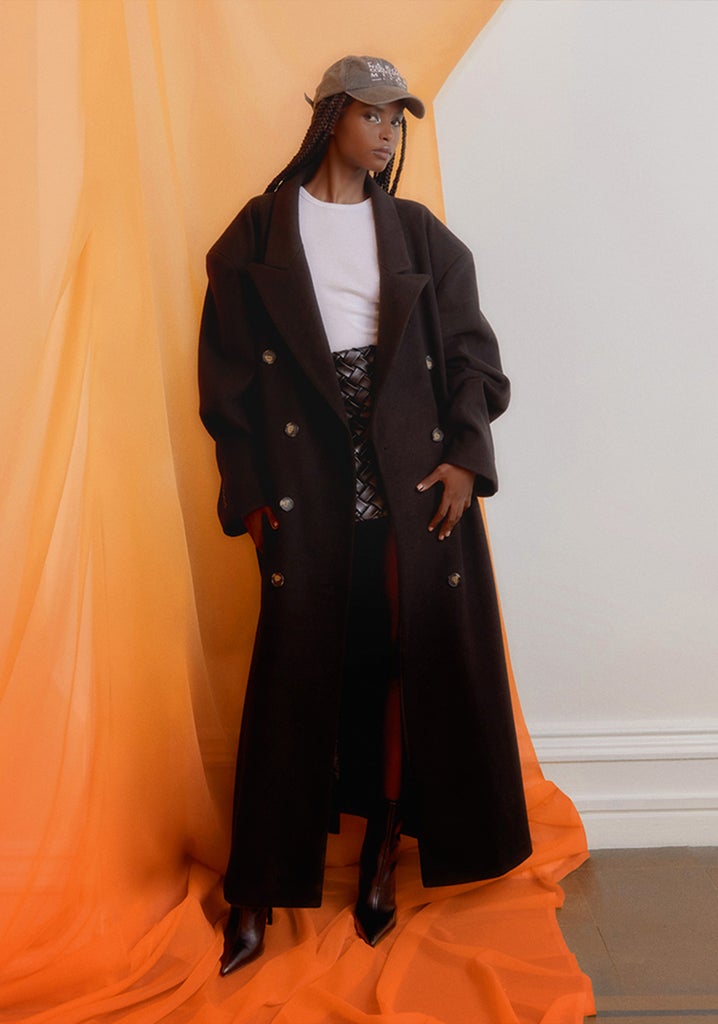These days it’s hard not to follow any mention of Topshop with a tongue-in-cheek: “RIP.” I’m the first to feel a painful pang when I pass Big Topshop on Oxford Street and spy the old signage juxtaposed with Ikea branding (the Swedish chain bought the space last autumn, less than a year after the Arcadia group, which included Topshop, collapsed into administration). But the beloved brand of so many of our teen years isn’t dead — it’s just reinventing itself. ASOS, which acquired Topshop in February 2021, has announced the next chapter for the cult label, with a standalone digital shopfront, a Gen Z-friendly aesthetic and the late but necessary introduction of a plus-size range.
Can a webpage and a Gen Z-ified look alone compete with Topshop’s defunct flagship or our irreplaceable memories of shopping the brand on the high street? What’s left of Topshop’s essence in this new chapter if it’s now just another fast fashion online store (albeit with concessions in Nordstroms across North America)?
With this rebrand, ASOS is taking inspiration from Topshop when it was at its best. In the noughties and 2010s, the label knew it needed to be different to be successful. Jane Shepherdson, the label’s brand director until 2006, pushed for beautiful, fashion-forward designs that customers would cherish for years and the highest quality of clothing they could offer at the fairer price points they were known for. Consumers knew they could trust Topshop for high-quality clothing that – instead of copying runway looks like most other high street shops – actually set its own trends.
There are echoes of that Shepherdson-era ethos in the brand’s new strategy. “At its height, Topshop brought together high street and high fashion to become a defining voice in British style,” Vanessa Spence, design and visual director at ASOS, tells Refinery29. “As we enter this new chapter with the brand, we wanted to capture this unique voice and build on it to empower both old and new audiences.”


Since its acquisition by ASOS, Topshop has fallen under the radar as it competes with brands like Weekday, H&M and River Island in an oversaturated e-commerce market. As it stands, consumers like Izzy Farmiloe, strategy director at Dazed Studio, are unsure whether ASOS can turn Topshop back into the era-defining fashion destination it once was. “I feel there’s a missed opportunity here to make a bolder statement about being back and connecting their rich heritage with what’s now and next for the brand,” Farmiloe tells Refinery29. “Topshop was iconic, democratising runway style for British teens all over the country. Since their acquisition we’ve been in a strange limbo period, partly mourning the loss and partly confused about what’s next.”
At the same time, Gen Z model Mariam Aluede tells us she’s able to connect better with digital-first brands. “It’s sad a physical Topshop store is not around anymore; however, the new digital approach could do wonders for the brand as social media does reach all kinds of audiences,” says Aluede. “The fact that shoppers can buy Topshop items through ASOS makes it easier for existing ASOS customers, as well as inviting others to join in. I tend to shop online because I find it easier, I get to see exclusive items which may not be in store, plus it fits well within my schedule.”
Coinciding with Topshop’s new announcement, the BBC released a two-part documentary at the end of September called Trouble at Topshop, exploring how the once ultra-popular chain fell from grace. As seen in the documentary, a team led by Shepherdson transformed Topshop from the male gaze-centric, “naff” brand it was in the 1980s into a label by women, for women. They started a true phenomenon so it’s worth noting that if reinvention has worked for the label before, perhaps it could pull it off again.
Mirroring its predicament before Shepherdson took the reins, the combination of Topshop’s failure to pivot to e-commerce, COVID-related high street shutdowns and drama surrounding Arcadia’s tax-dodging and allegedly abusive owner meant the brand wasn’t in the best position at the time of its demise in 2020. And while its acquisition might have felt incredibly anticlimactic for longtime lovers of the brand, this new chapter presents a valuable opportunity for it to do better.
For instance, in its new iteration the brand has introduced a Curve range, which goes up to a UK size 26. Compare this to Topshop’s time on the high street when its sizing ran up to a UK 16, preventing many women from shopping there (although its petite range was a solid selling point). “I think it’s really interesting they have now opted to create plus-size pieces with the rebrand, even though plus-size women had been asking for this change for years,” says content creator, author and journalist Stephanie Yeboah. “Plus-size bodies are often seen as an afterthought in fashion and there is something so insulting about brands using plus sizing as a last-ditch effort to rally consumers.” A similar thread can be seen running through Victoria’s Secret’s recent strategies, too. Yeboah calls for Topshop to display more plus-size representation rather than its current straight and mid-size model majority.
Carrying plus sizes is non-negotiable for a brand to feel relevant and trustworthy in the 2020s and ASOS seems more willing to focus on diversity than Topshop ever did. This move towards inclusivity is a great starting point but sustainability doesn’t appear to be central to the new strategy, which seems like an important oversight.
Farmiloe agrees that Topshop must be more transparent regarding its sustainability practices – another sticking point for brands in 2022. “We know the next generation cares deeply about sustainability and brand transparency so I feel there’s another missed opportunity for more honesty and insight into the behind-the-scenes,” she says. “Who’s the team now working on the brand, how are the products being manufactured, what do they stand for beyond ‘fashion without boundaries’ – and what does that mean, exactly?”
Ultimately, the future of this ‘new Topshop’ lies in whether or not it can carve the same niche for itself as it has in decades past. In many ways it is on the right track, with relevant collaborators like Diet Paratha founder Anita Chhiba and Brazilian artist Fernanda Liberti scoring points with a new generation of change-makers and fashion players. And while the knowledge that Topshop no longer exists as we knew it may bring up some nostalgia, a return to the toxic culture instilled under Green’s leadership isn’t ideal either. “Ultimately, this is just the first step on a new journey for Topshop and, for me, it’s the road ahead that’s exciting now,” says Spence. So yes, there’s a lot of work to do. Let’s wait and see if ASOS is up to the task.
Like what you see? How about some more R29 goodness, right here?
What The Demise Of Topshop Means To Millennials